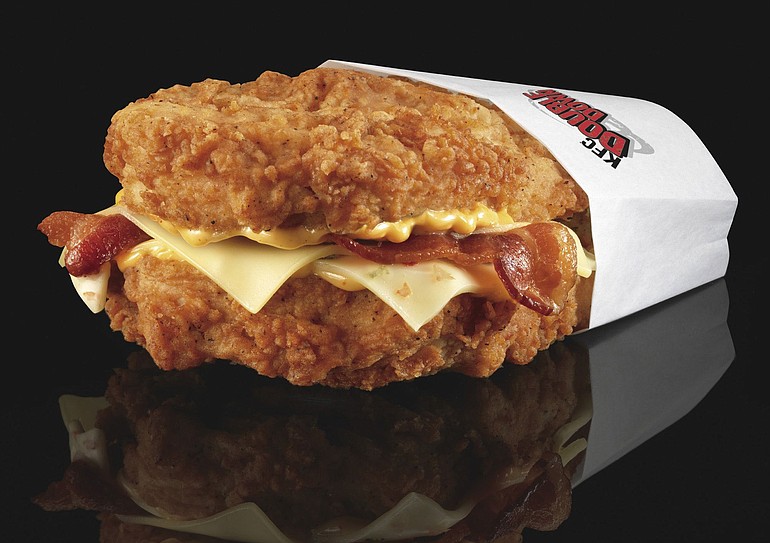Bow your heads, please, for 2010 saw yet another foodie term of affection — artisanal — jump the shark.
This year, big business continued to follow the foodie dollar, co-opting and transforming the language of the culinary crowd. A few years ago, they swarmed the cottage organic industry. Then everyone from Whole Foods to Walmart latched on to the “local” label.
When the Big Foods of the world made Frito-Lay’s Tostitos from “Artisan Recipes” and Sargento shredded cheeses from “Artisan Blends” (all trademarked, of course), you know the term lost credibility.
So went the year in food.
It may mean 2011 will see yet another search for a term that sets apart real from really industrialized food. There’s no frontrunner, but odds are author and activist Michael Pollan and chef-agronomist Dan Barber will have a hand in coining it.
That’s no laughing matter. Or maybe it is.
Better ask another star of 2010: Ruth Bourdain, the fictional spawn of former Gourmet magazine editor Ruth Reichl and sass-talking chef Anthony Bourdain. The freakishly androgynous anonymously penned mashup ruled the Twittersphere, retooling the real Reichl’s lyrical tweets into raunchy, acerbic comic fodder, most of it unfit to print.
Ruth Bourdain was the name to follow and the person to unmask.
Nobody did.
Speaking of Gourmet, 2010 saw the 1-year anniversary of its demise, but its zombie lived on. Most of us — including Reichl, now a Random House editor — have moved on. Parent company Conde Nast, which pulled the trigger on it, seemed to have more trouble. It trotted out the Gourmet name on everything from a cookie cookbook to an app to “special editions” of the magazine.
Makes you wonder why it was killed in the first place.
The Gourmet app entered a crowded marketplace. This was the year for big name foodies to put their thumbprints on tiny screens. Everyone from Martha Stewart and Tyler Florence to Rachael Ray and Mark Bittman got in on the app game.
The iPad was supposed to revolutionize cookbooks, finally bringing together the traditional contents and portability of paper with the whiz-bang features, encyclopedic depth and flexibility of video and the Internet.
We’re still waiting.
Not all grub-related media growth was on tiny screens. Apparently the American appetite for televised food is as insatiable as its obsession with over-the-top fast food. In the spring, the 17-year-old Food Network gave birth to another 24-7 culinary enterprise: the Cooking Channel.
On ABC, Brit chef Jamie Oliver was busy trying to revolutionize the eating habits and food policies of a West Virginia town that wasn’t always thrilled to have him there. Whatever the lasting difference on that community, “Jamie Oliver’s Food Revolution” was eaten up by viewers and it won an Emmy for outstanding reality program.
It was a spotlight Oliver had to share, for talk about bettering America’s eating habits was all the rage from 1600 Pennsylvania Ave. to Sesame Street.
First lady Michelle Obama continued her push to end childhood hunger and fight childhood obesity, rallying chefs — celebrity and not — to donate time to resource-strapped school lunch programs, and helping to push through legislation that overhauled school lunches and funded an additional 20 million after-school meals for needy kids.
An effort to revamp the nation’s food safety system got broad support after a large-scale outbreak of salmonella-tainted eggs sickened as many as 1,600 people during the summer.
And down by Hooper’s Store, Elmo joined celebrity chef Art Smith and a host of new Muppets — banana, cheese, whole-grain roll and broccoli — to teach healthy eating on a budget, and pull children away from the crossroads of poverty and obesity.
They also might want to keep them away from the latest fast food obsession: a caloric game of one-upmanship in creating the most over-the-top menu item.
In spring, KFC gave us the hugely popular 540-calorie Double Down, a bunless sandwich of bacon, cheese and chicken filets.
Not to be outdone, Ihop offered Pancake Stackers, a crustless cheesecake filling surrounded by two buttermilk pancakes topped with a strawberry, blueberry or cinnamon apple compote and whipped topping. Accompanied by two eggs, bacon and hash browns, it packed 1,250 calories.
Yet both seemed eclipsed by the return of McDonald’s McRib. The company credited the sandwich with helping push sales up nearly 5 percent in November.
In 2010, pork was the meat to eat. Bacon continued to command star treatment, though by the time you can cruise online and find “Star Wars” spaceships made out of bacon, you know its days are numbered. And despite our preoccupation with cured pig, chicken remained the leader in recipe searches on Yahoo.
Also hot was what people weren’t eating: gluten. Grocers seem so overstocked by products clamoring to set you free from the wheat protein, it seems only a matter of time before somebody offers gluten-free gluten.
What’s next? Vegans are hotter than hot, but so is meat. We’ll inhale meatballs spiked with unspeakable ingredient combinations. We’ve read way too many books about butchers this year. Could fish mongers be the next fascinating food worker for whom memoirists pen odes?
Perhaps, but only if they batter the local and organic catch of the day in artisanal gluten-free breadcrumbs.



